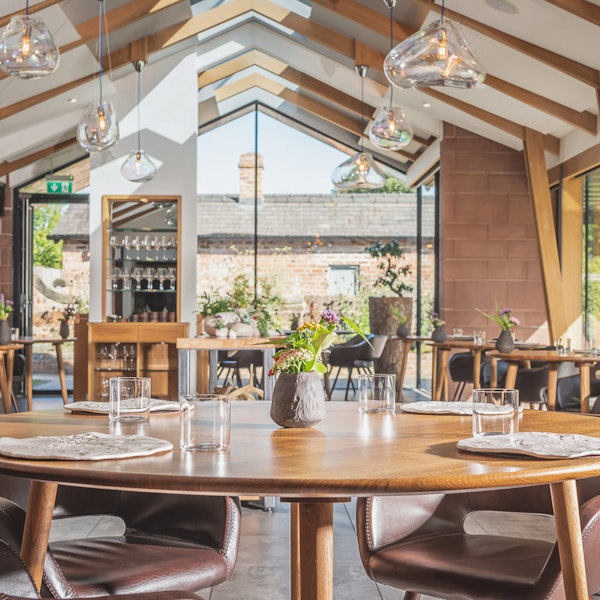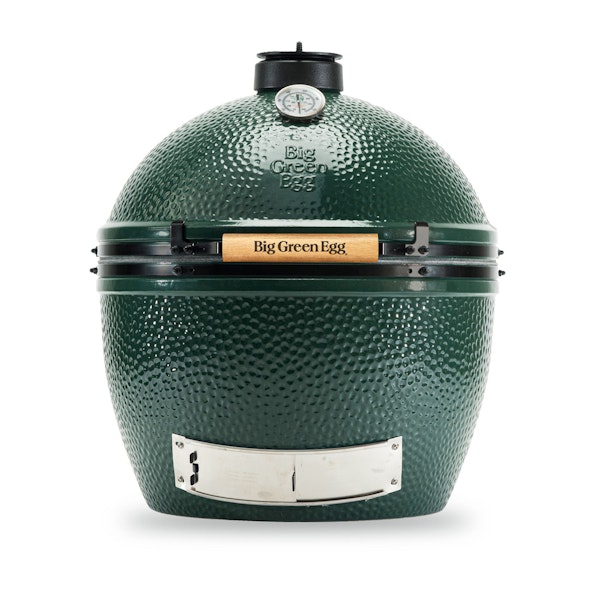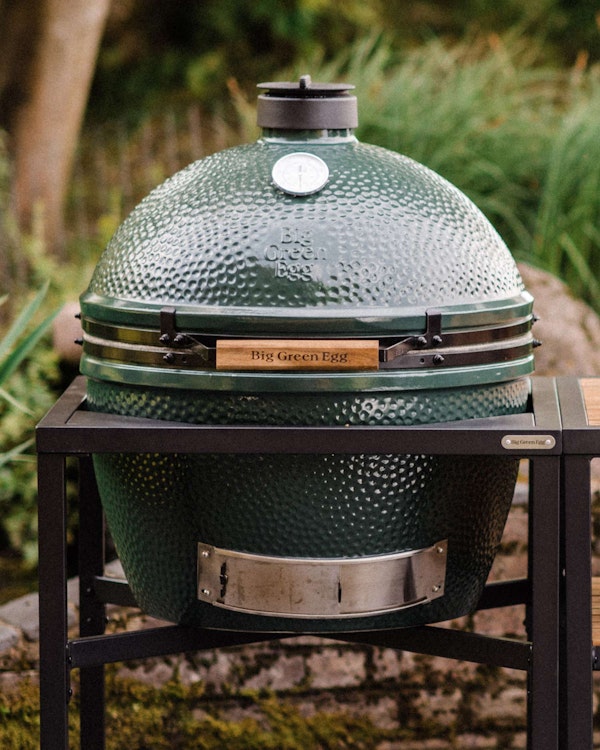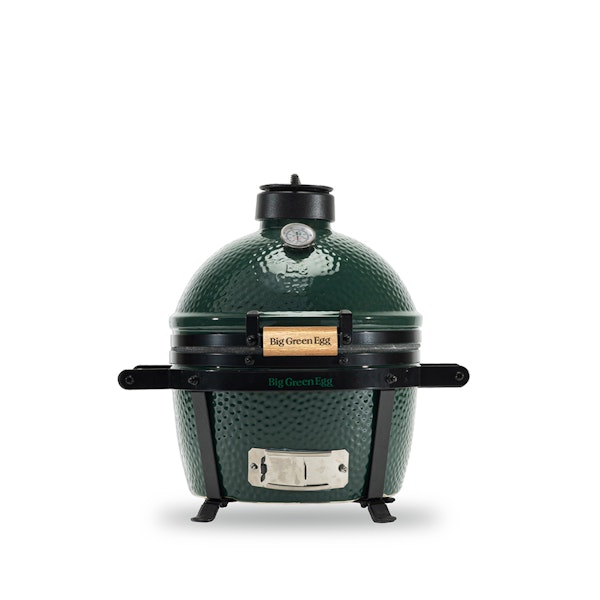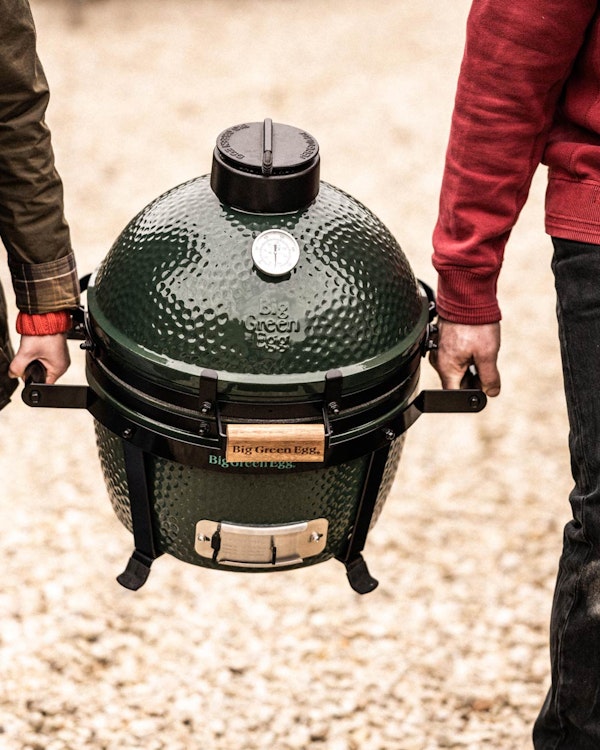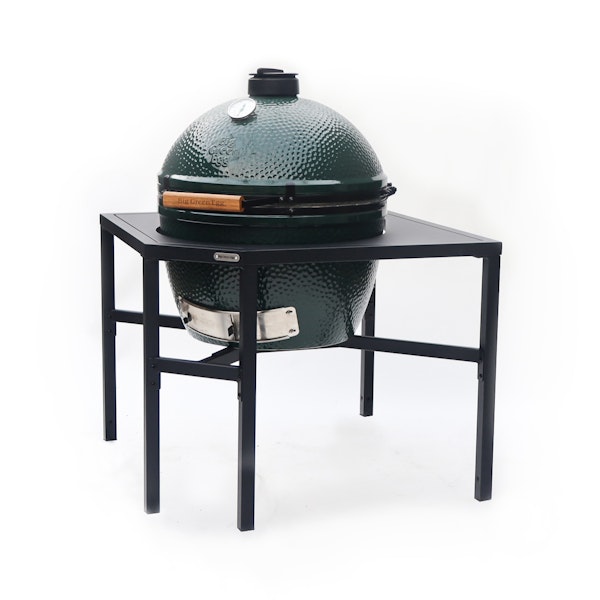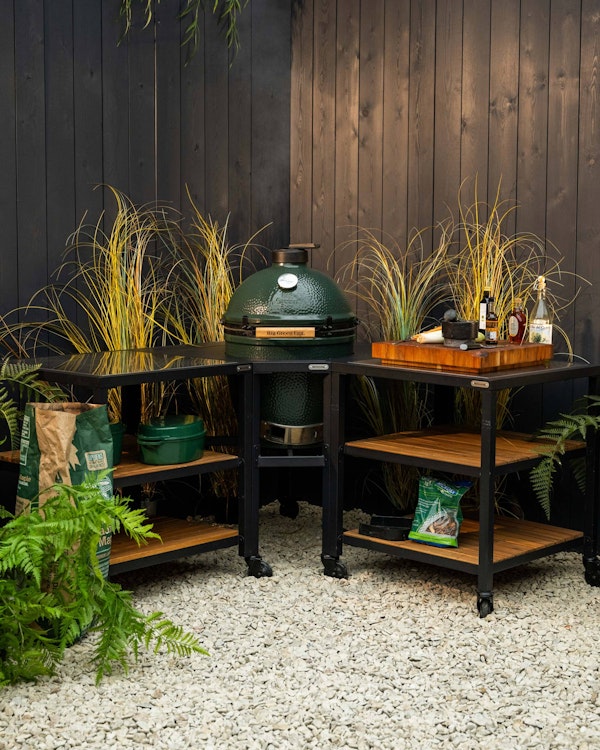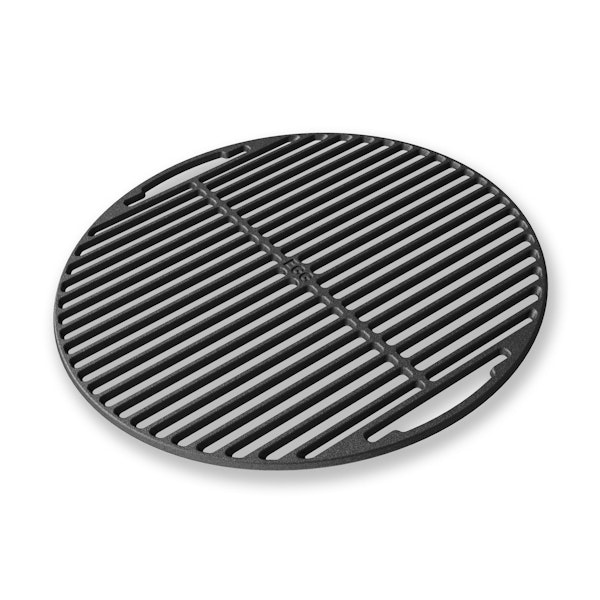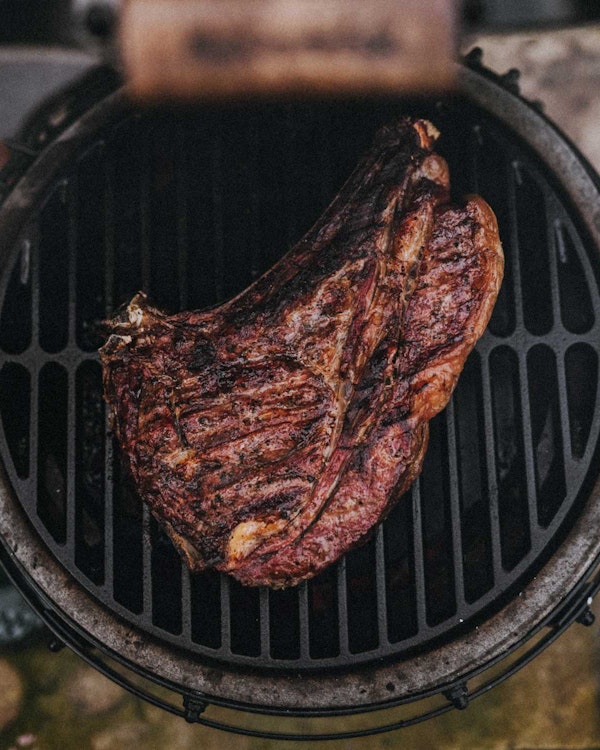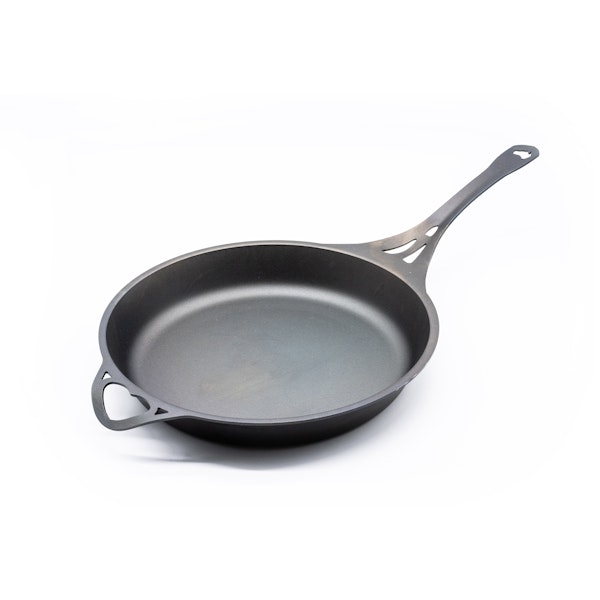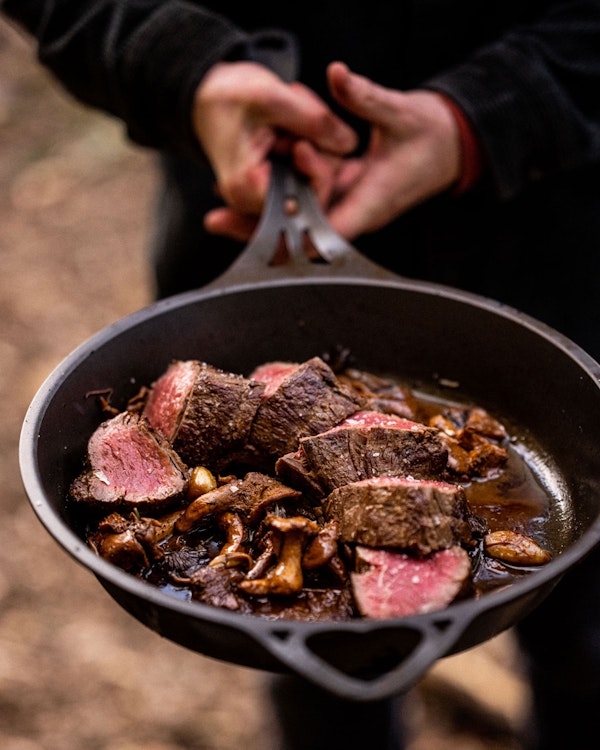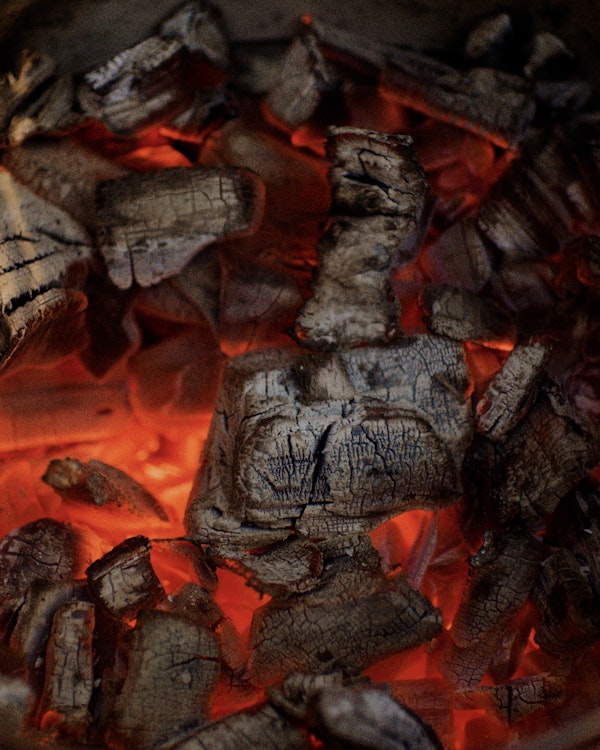
MOOR HALL AND THE EGG
Main content
Follow the stars
Moor Hall in Lancashire is one of only two restaurants in the UK to hold the ultimate accolade: three Michelin stars, the absolute pinnacle for any chef, and a green Michelin star, which recognises a deep commitment to sustainability. And we’re very proud to say that a Big Green Egg is part of the picture.
Throughout the summer, chef-patron Mark Birchall is using an EGG to create a dish for his Moor Hall menu, enjoyed outdoors in the restaurant’s beautiful kitchen garden before the guests head to their tables. He also has a MiniMax of his own at home. “It’s the control, really,” says Mark, explaining its appeal. “The ability to get precise heat and retain it consistently is impressive. It lets you be instinctive but also accurate, which is a rare balance. And the flavour you get, especially over time, is second to none.”
Words from Michelin Mark
GIVE PEAS A CHANCE
Moor Hall’s reputation has been built on a refined, produce-driven tasting menu that celebrates local ingredients at their very best. Many of those seasonal ingredients are grown in the restaurant’s own kitchen garden, with the rest sourced from small-scale producers around the region. It’s in the garden, under a mulberry tree, that the EGG has found its home. This summer, Mark has been using it to create a dish of heritage peas (grown right there in the garden) with chorizo (made with local meat, cured in Moor Hall’s own curing room).
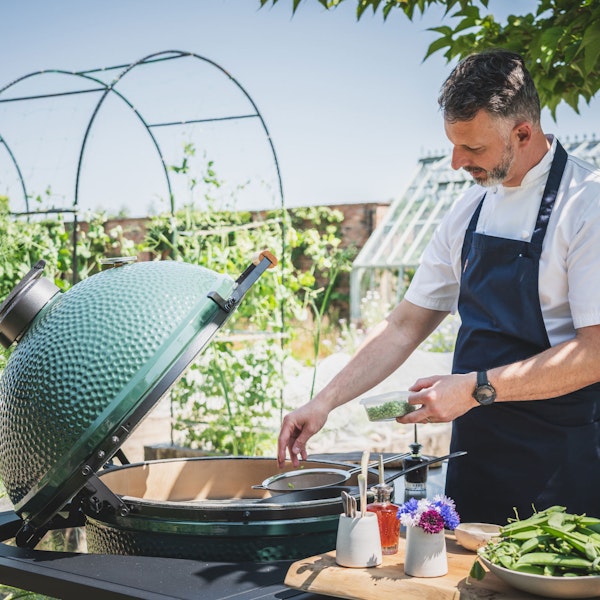
MARK’S BIG GREEN EGG DISH
To make our snack of Alderman Peas, Chorizo and Cornflowers, we begin by preparing a pea mousse. After gently melting gelatine sheets in double cream, we add the warm cream to a bowl of blended petit pois and some flavoured oil infused with both mint and calamint.
We use a hand blender to create a smooth emulsion, then pass this through a fine sieve before setting it over ice to chill. Finally, we whip some whipping cream into soft peaks and fold it into the chilled mousse. After seasoning with salt, we pipe the mousse into canape-sized croustades.
With the guests assembled outside, we heat a Solidteknics pan on our XL Big Green Egg, using direct heat, then throw in some shelled Alderman peas and diced Moor Hall chorizo. We cook gently, stirring constantly, until the chorizo releases its oil and crisps up lightly around the edge and the peas are just warmed through – it’s important not to overcook them. To assemble, we spoon the warm pea and chorizo mixture onto the pea mousse and garnish with fresh cornflowers from the garden.
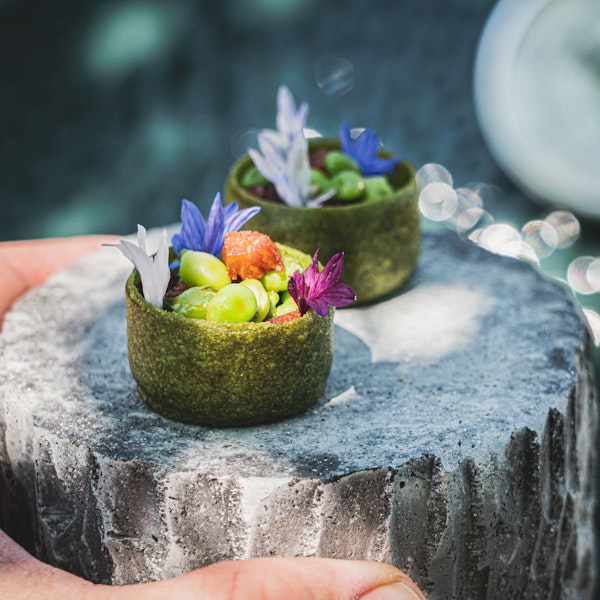
A CHAT WITH MARK
This year, as well as winning his third Michelin star, Mark was crowned Chef of the Year at the 2025 National Restaurant Awards. He took time out from his busy schedule to chat to us about hyperseasonality, fire cooking, and how growing your own ingredients helps make you a better chef.
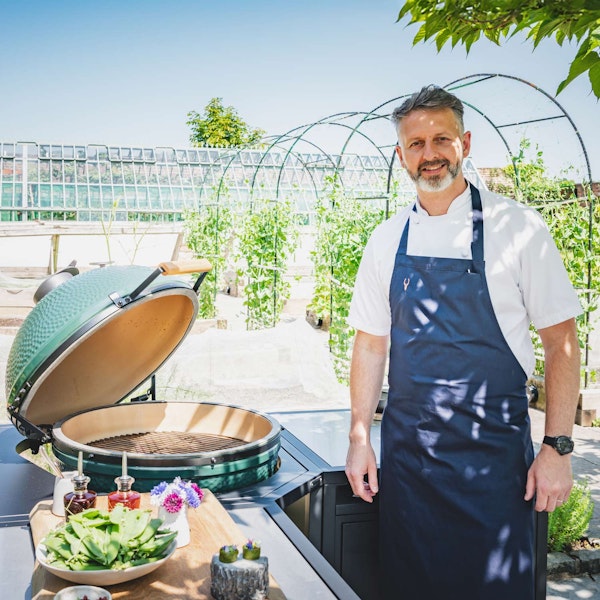
Mark likes
The excellent XL
The EGG in Moor Hall’s kitchen garden is an XL, our largest model. It’s the size best suited to feeding big parties or bringing the magic of fire cooking to multi-dish meals, but that scale doesn’t come at the cost of speed, fuel efficiency or ease of use. Mark’s XL is hosted within a Corner Modular Nest: the perfect hub for creating an efficient outdoor kitchen, with lots of preparation space and storage in easy reach of the chef.
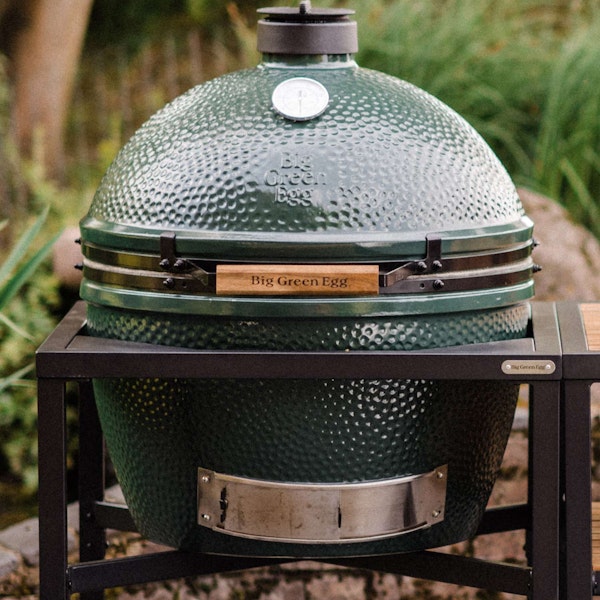
10% off a stay at Moor Hall
As well as the main restaurant, Moor Hall is home to 14 beautiful guest bedrooms and a second restaurant, The Barn, which also holds a Michelin star of its own. Mark and his team are offering members of the Big Green Egg Club the chance to enjoy 10% off the bed and breakfast rate for overnight stays. The breakfast alone – a magnificent affair – is worth the trip.
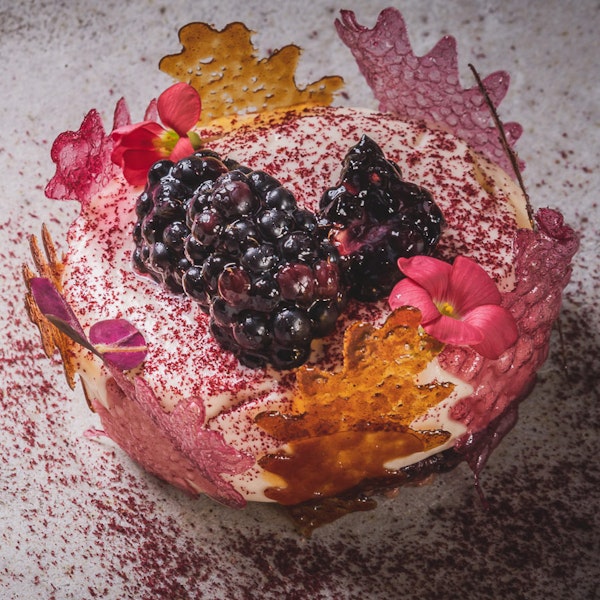
ABOUT MOOR HALL
Set in a stunning 16th-century manor house in the countryside just outside Ormskirk, Moor Hall opened in 2017 after a multi-million-pound renovation. As well as the main restaurant, the estate is home to 14 beautiful guest bedrooms and a second restaurant, The Barn, which since 2022 has held a Michelin star of its own. Moor Hall’s substantial kitchen garden is fully organic, its soil enriched by composted restaurant and garden waste. Other ingredients for Mark’s ever-changing menu are produced within the estate’s own dairy, bakery, meat curing room and beehives.
